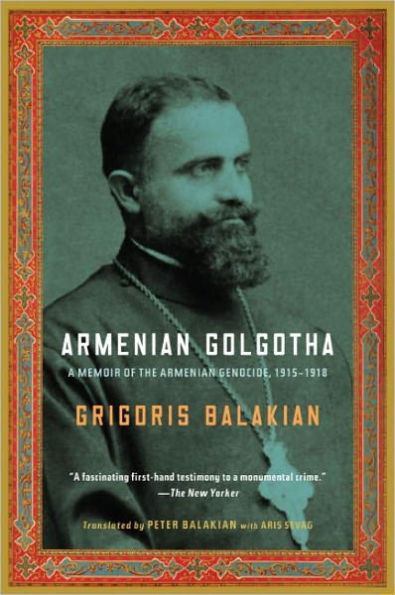Read an Excerpt
The Night of GethsemaneOn the night of Saturday, April 11/24, 1915, the Armenians of the capital city, exhausted from the Easter celebrations that had come to an end a few days earlier, were snoring in a calm sleep. Meanwhile on the heights of Stambul, near Ayesofia, a highly secret activity was taking place in the palatial central police station.Groups of Armenians had just been arrested in the suburbs and neighborhoods of the capital; blood-colored military buses were now transporting them to the central prison. Weeks earlier Bedri,* chief of police in Constantinople, had sent official sealed orders to all the guardhouses, with the instruction that they not be opened until the designated day and that they then be carried out with precision and in secrecy. The orders were warrants to arrest the Armenians whose names were on the blacklist, a list compiled with the help of Armenian traitors, particularly Artin Megerdichian, who worked with the neighborhood Ittihadclubs.† Condemned to death were Armenians who were prominent and active in either revolutionary or nonpartisan Armenian organizations and who were deemed liable to incite revolution or resistance.‡On this Saturday night I, along with eight friends from Scutari, was transported by a small steamboat from the quay of the huge armory of Selimiye to Sirkedji. The night smelled of death; the sea was rough, and our hearts were full of terror. We prisoners were under strict police guard, not allowed to speak to one another. We had no idea where we were going.We arrived at the central prison, and here behind gigantic walls and large bolted gates, they put us in a wooden pavilion in the courtyard, which was said by some to have once served as a school. We sat there, quiet and somber, on the bare wooden floor under the faint light of a flickering lantern, too stunned and confused to make sense of what was happening.We had barely begun to sink into fear and despair when the giant iron gates of the prison creaked open again and a multitude of new faces were pushed inside. They were all familiar faces—revolutionary and political leaders, public figures, and nonpartisan and even antipartisan intellectuals.From the deep silence of the night until morning, every few hours Armenians were brought to the prison. And so behind these high walls, the jostling and commotion increased as the crowd of prisoners became denser. It was as if all the prominent Armenian public figures—assemblymen, representatives, revolutionaries, editors, teachers, doctors, pharmacists, dentists, merchants, bankers, and others in the capital city—had made an appointment to meet in these dim prison cells. Some even appeared in their nightclothes and slippers. The more those familiar faces kept appearing, the more the chatter abated and our anxiety grew.Before long everyone looked solemn, our hearts heavy and full of worry about an impending storm. Not one of us understood why we had been arrested, and no one could assess the consequences. As the night’s hours slipped by, our distress mounted. Except for a few rare stoics, we were in a state of spiritual anguish, terrified of the unknown and longing for comfort.Right through till morning new Armenian prisoners arrived, and each time we heard the roar of the military cars, we hurried to the windows to see who they were. The new arrivals had contemptuous smiles on their faces, but when they saw hundreds of other well-known Armenians old and young around them, they too sank into fear. We were all searching for answers, asking what all of this meant, and pondering our fate.*See Biographical Glossary.†Meeting places for members of the local Ittihad Party committees throughout the empire.—trans.‡Revolutionary here refers to reform-oriented political workers.—trans.



